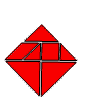0505-492 Interactive Design for Museums
Elizabeth Goins, Christopher Egert, Andrew Phelps
All contact information is located within myCourses
What are museum objects? How do we use technology and game design to create meaningful visitor experiences? Today museum exhibit design is grounded in the art of creating effective and compelling interactive experiences with new media technologies.
The aim of this course is to provide students with an understanding of how to integrate museum objects, educational goals and interactive game design. Weekly readings and class discussions will focus on the study of interactive design principles across a variety of media application spaces and contexts. Students will work in multidisciplinary teams on a single quarter long project. This project will provide the opportunity for students to explore and apply concepts learned in class to their own interactive games and designs.
Expectations
Participation (15%)
Participation is expected in all lectures and lab sessions for this class and will affect your grade. Readings should be completed prior to class since the discussions will focus on related topics. Any homework assignments are also included as participation. Students are expected to be prepared for class and to actively participate in discussion and in-class exercises
Checkpoints (35%)
There are several checkpoints to evaluate the progress of team projects. Checkpoints are listed in the class schedule at the end of this document. Teams should be prepared to present their work for feedback at each check point.
Final Project (30%)
The final project should be completed by and presented in the final week of classes as listed on the schedule. Teams will be assessed on both the final game and presentation.
Projects must be based on real museum collections or objects determined by the instructor(s) during the quarter.
Tools for the final project: The class standard is Game Maker. Teams with more advanced skills may use other tool sets for modding. If a team chooses to use something other than Game Maker they must meet several criteria and clear with instructors first:
- Team must have the software and be willing to figure out technical issues
- Teams must bring the software to class in order to demonstrate and work on the project
- Teams must be able to work on projects in class during open lab
- Teams must meet the checkpoint goals
Design Doc (20%)
Each student must prepare a design document for the team project. This document should be a minimum of 4000 words. The document must include:
- Overview of the game
- Educational goals
- Research
- What collection does the game draw from?
- Why are these objects historically significant? Why are they important? How were they used? What did they mean? How were they made? What were they made from?
- Art style brief description
- Game Walkthrough
- Discussion of formal and dramatic elements
- Assessment
- Each team must play test their game
- Describe how the test was conducted
- The analysis of the results must be included
- Describe how the results were incorporated into the design process
Late Policy: Project check points and presentations must be evaluated in class as stated on the syllabus. Teams not presenting at checkpoints will receive a zero for that assignment. 10 points will be deducted for each day late for the final design document.
Schedule
Readings are listed on the schedule and are to be found on myCourses content page.
Week |
topics |
reading |
homework |
1 |
Introduction to the course. |
Fullerton Ch 7 |
|
|
Game and object basics |
|
Game maker pro tutorials |
2 |
Game genres for museums |
Fullerton Chapters 3 and 4 |
Find an example of a museum game for class, be prepared to critiques and discuss for next class |
|
Museum Education |
|
|
Teams form during week 2. Teams should be interdisciplinary. |
|||
3 |
Narrative |
Whitehill, Checkerboard Game of Life |
|
|
Checkerboard game of life prototype development |
|
Checkered Game of Life Design Document due in class beginning of week 4 |
Checkpoint 1: Team document on concept, gameplay overview, software. |
|||
4 |
World Building |
Howard Ch. 2; |
World building assignment: |
|
World building task |
|
|
5 |
Narrative and character development, writing dialogue |
Howard Ch 3; |
|
|
Open lab |
|
|
Checkpoint 2: world created within the software. Team crit during Thursdays class |
|||
6 |
Open lab/work period/crit and feedback by faculty |
Howard 4 |
|
|
JP Dyeson Talk and Q&A |
|
|
7 |
Quests and challenges |
Howard Ch 5 |
|
|
Open lab |
|
|
Checkpoint 3: characters and objects, narrative. Crit, teams will present, characters and objects |
|||
8 |
Art and assets |
|
|
|
Open lab |
|
|
Checkpoint 4: Student project crit; should have game rough prototype, playtest in class for feedback |
|||
9 |
Technology in the Museum |
Mobile Multimedia: Reflections; |
|
|
Open lab |
|
|
10 |
Assessment |
|
|
|
Present projects and crit |
|
|
11 |
Re-present with changes from week 10 feedback |
|
Design docs due, upload to course dropbox |
Note: Accommodations must be brought to the attention of the instructors during the first week of the course.
Terms and conditions of the syllabus are subject to change.

 by
by 












